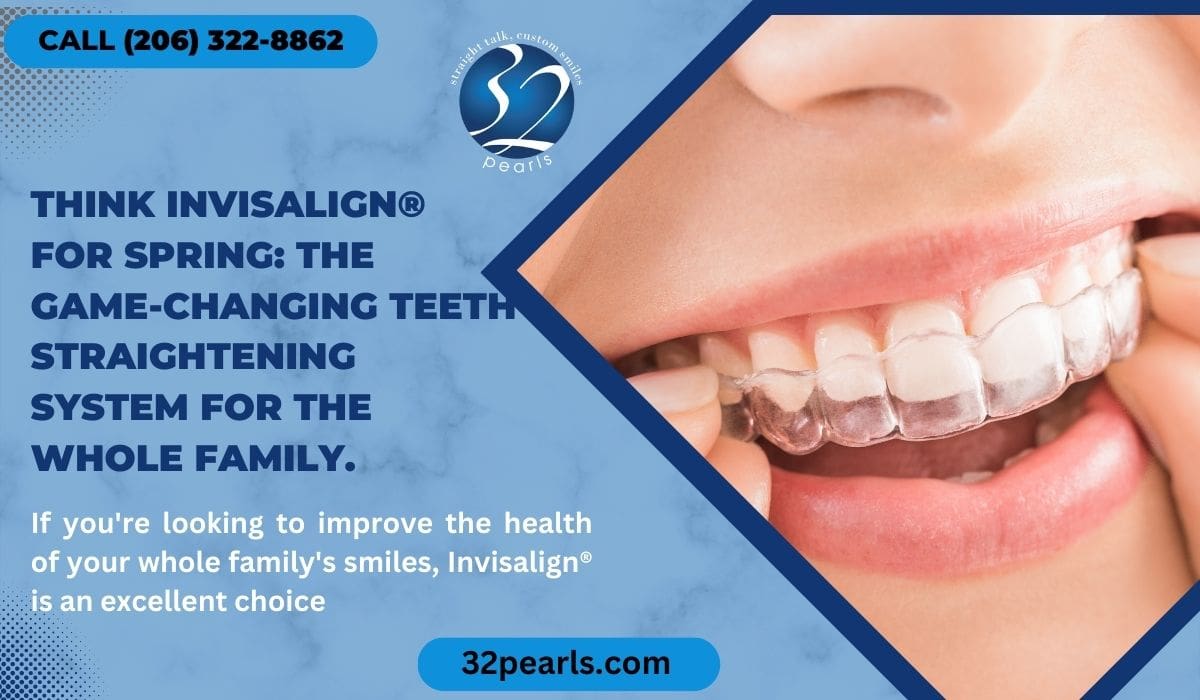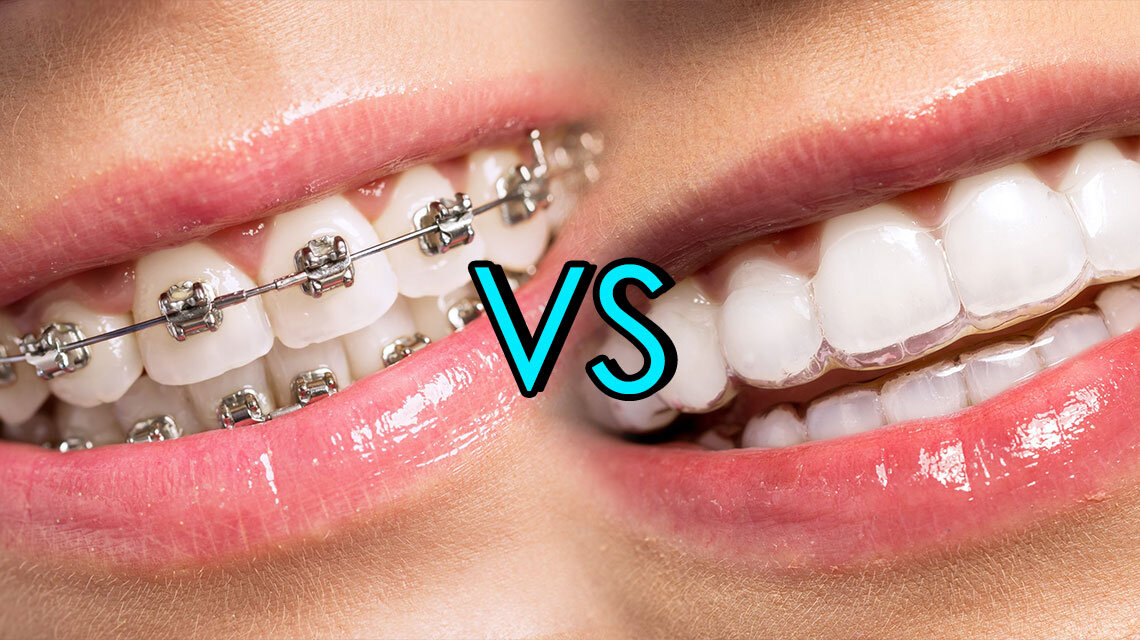What to Anticipate Throughout Your Invisalign Journey: A Comprehensive Review
What to Anticipate Throughout Your Invisalign Journey: A Comprehensive Review
Blog Article
Invisalign vs. Typical Braces: Which Option Is Right for You?
When taking into consideration orthodontic therapy, the option between Invisalign and traditional dental braces provides a number of essential factors that merit mindful examination. Invisalign uses a discreet alternative with detachable aligners, while standard braces provide an extra noticeable yet effective solution for serious imbalance.
Overview of Therapy Alternatives

On the other hand, conventional braces contain steel braces and wires that are bound to the teeth. This approach applies constant stress over time to achieve positioning. While reliable for complex orthodontic problems, standard dental braces require regular brows through for adjustments and can position difficulties in keeping dental hygiene due to the problem of cleaning up about cords and brackets.
Both options have their advantages, and the selection usually rests on specific dental conditions, way of life preferences, and client compliance. Eventually, getting in touch with an orthodontic professional is critical for identifying the most suitable therapy plan customized to individual needs. Comprehending the nuances of each option can considerably influence the overall success of orthodontic therapy.
Aesthetic Factors To Consider
A substantial aspect influencing the selection between Invisalign and traditional dental braces is the aesthetic appeal each therapy offers. Invisalign aligners are crafted from clear plastic, making them basically undetectable when worn.
On the other hand, standard braces include steel brackets and cords, which can be a lot more noticeable. While innovations in orthodontic innovation have actually resulted in the growth of smaller braces and colored elastics, standard braces still preserve an even more conspicuous account. For some individuals, the exposure of dental braces may prevent them from seeking required therapy.
Ultimately, the option in between Invisalign and conventional dental braces might depend upon individual choices concerning aesthetics. Individuals that prioritize discretion commonly lean toward Invisalign, while those who are much less worried about exposure might select conventional dental braces. Recognizing the visual implications of each choice is essential for making a notified choice that straightens with one's lifestyle and preferences.
Comfort and Convenience

In terms of ease, Invisalign aligners are detachable, allowing clients to enjoy their favored foods without constraint and preserve optimal dental hygiene. Brushing and flossing are streamlined, as the aligners can be secured during these regimens, whereas standard braces require mindful navigating around cables and brackets.
In contrast, typical braces require normal modifications, making them much less convenient for those with hectic timetables. In general, the convenience and convenience of Invisalign make it an enticing choice for lots of individuals seeking orthodontic therapy.
Treatment Duration and Efficiency
While both Invisalign and standard dental braces are effective in dealing with dental misalignments, the period of therapy can differ considerably in between both options. Normally, Invisalign therapy can take anywhere from 12 to 18 months, depending on the complexity of the case. The clear aligners work by progressively shifting teeth into their preferred settings, and normal follow-ups with an orthodontist aid ensure progress stays on the right track.
On the other hand, standard dental braces often call for a longer commitment, usually varying from 18 months to 3 years. This is due to their fixed nature and making use of brackets and wires, which can be much more efficient for serious misalignments and complex cases (Invisalign). The therapy performance of typical dental braces is well-documented, as they permit specific changes and higher control over tooth motion
Eventually, the choice why not try here between Invisalign and traditional braces might rest on both the expected treatment duration and the specific oral problems available. Consulting with an orthodontist is important, as they can offer tailored recommendations based upon private requirements, guaranteeing the chosen approach lines up with preferred outcomes and durations.
Price Contrast and Insurance Coverage Options
Price plays a considerable role in the decision-making procedure for people considering orthodontic therapy, whether selecting Invisalign or conventional dental braces. Typically, the cost of Invisalign arrays from $3,000 to $8,000, while conventional braces commonly cost between $2,000 and $6,000. Variables influencing these prices include the intricacy of the case, the period of treatment, helpful resources and geographical area.
Insurance insurance coverage can substantially affect out-of-pocket expenses. Numerous dental insurance coverage plans provide partial insurance coverage for orthodontic therapies, however the specifics can differ commonly. It is essential for people to evaluate their insurance plan to figure out the extent of insurance coverage for either choice. Generally, conventional dental braces may be much more regularly covered by insurance plans contrasted to Invisalign, which some insurance companies classify as a cosmetic procedure.
In addition, numerous orthodontic practices use versatile layaway plan, making both therapy options more easily accessible. People should ask regarding prospective financing choices and discount rates for in advance repayments. Examining the complete price, consisting of insurance policy advantages and layaway plan, is crucial for making an informed choice that aligns with both aesthetic choices and spending plan considerations.

Final Thought
In recap, the option between Invisalign and standard braces rests on multiple factors, including visual choices, convenience, therapy duration, and cost. Invisalign offers a Find Out More very discreet, detachable choice that assists in oral hygiene and dietary adaptability, while typical dental braces may be more suitable for intricate oral issues and frequently come at a reduced cost point. Ultimately, appointment with an orthodontist is necessary to examine private scenarios and identify the most appropriate therapy choice for achieving optimum dental alignment.
When taking into consideration orthodontic therapy, the option in between Invisalign and conventional braces provides a number of essential factors that merit mindful assessment.Comparing Invisalign and typical dental braces discloses unique therapy choices for orthodontic correction.While both Invisalign and typical braces are reliable in fixing oral misalignments, the period of therapy can vary significantly in between the two choices.Cost plays a considerable duty in the decision-making process for people considering orthodontic treatment, whether deciding for Invisalign or traditional dental braces.In recap, the choice between Invisalign and typical braces hinges on several factors, including visual choices, comfort, treatment duration, and price.
Report this page